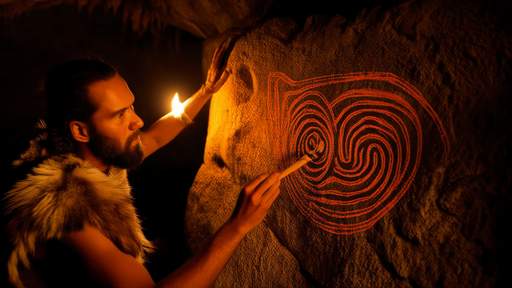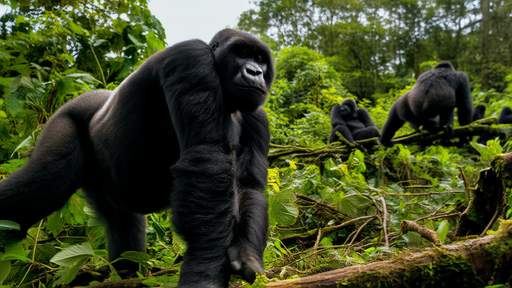In the heart of the Democratic Republic of Congo (DRC), a remarkable conservation story is unfolding. Last October, four female eastern lowland gorillas were airlifted from their home in Kasuhgo and released into Virunga National Park, 40 miles northeast. This translocation, the largest of its kind for this critically endangered subspecies, has already achieved what many thought would take years: the successful integration of these gorillas into a wild group. This extraordinary feat is not just a victory for these four individuals but a beacon of hope for the future of their species.
The journey of Isangi, Lulingu, Mapendo, and Ndjingala, the four female gorillas, began long before their release. Rescued from the illegal wildlife trade as infants, they were taken to the Gorilla Rehabilitation and Conservation Education Center (GRACE), where they spent years learning to forage, socialize, and thrive as they would in the wild. This meticulous rehabilitation process was essential, as it equipped them with the skills needed to survive in their new environment.
Their destination, Mount Tshiaberimu, known as the "Mountain of the Spirits," is a 1,700-meter peak in the northern region of Virunga National Park. Here, they were initially kept in a fenced enclosure to acclimate to their surroundings. The monitoring team, led by GRACE Gorillas and Virunga National Park, anticipated a transition period ranging from several months to several years. However, the gorillas' adaptation was nothing short of miraculous.
The catalyst for their swift integration was a charming wild silverback named Mwasa. Day after day, he approached the enclosure, beating his arms on the ground and grunting to attract the females' attention. His persistence paid off, as the females responded to his calls and even chose to sleep closer to him along the fence line. Observing this natural courtship, the monitoring team decided it was time to let the females join Mwasa. "We really pride ourselves on every decision being gorilla-led," says Katie Fawcett, Executive and Science Director for GRACE Gorillas. "After three days of attention directed at the magnificent Mwasa, the decision was made: 'let's go for it.' The fence was cut, and they were free to join him."
Since their release, the four females have seamlessly integrated into life in the wild. They have adapted to the colder climate and a new diet of bamboo shoots and native plants. Rangers continue to monitor their health through non-invasive biological samples and visual assessments. So far, the gorillas show no signs of stress, with thick, shiny coats and full bellies. The most thrilling development came in the new year when Mwasa was seen mating with Ndjingala, a 16-year-old female. Since then, the other three females have also mated with him. Given that gorillas have a gestation period similar to humans, the team is eagerly awaiting the possibility of new births by September. While they remain cautiously optimistic, considering the females were on contraception during their time at GRACE, a successful birth would be a monumental achievement for the entire species.
The eastern lowland gorilla, or Grauer's gorilla, is the largest of the four gorilla subspecies and is found in the lowland tropical rainforests of eastern DRC. All gorilla subspecies are endangered, but eastern lowland gorillas face particularly dire circumstances. Previous translocations of eastern gorillas have had poor survival rates, with individuals dying or disappearing within weeks of release. This project stands out not only for its scale but also for its approach. Instead of releasing young gorillas back into the wild, the team chose to rehabilitate the females over a long period, ensuring they had the social and survival skills needed to thrive. This strategy aimed to mimic the natural behavior of adult females joining a wild group.
The project also serves a critical genetic purpose. The small, isolated population of eight gorillas living on Mount Tshiaberimu was on the brink of extinction. Scientific modeling suggested this population would disappear within 20 to 50 years without intervention. By introducing new females, the project has given this population a fighting chance. "The tiny gorilla population was doomed but could now be saved by this intervention," says Liz Williamson, a professor specializing in gorilla conservation, ecology, and behavior. She adds that the situation facing Grauer's gorillas across eastern DRC is dire, but this translocation could bring multiple conservation benefits.
However, working within Virunga National Park presents significant challenges. The park has been a center of armed conflict for decades, with over 200 rangers killed since its creation in 1925. The recent resurgence of the M23 rebel group has escalated tensions, making ranger attacks increasingly common. Mount Tshiaberimu is located within this troubled region, making conservation efforts even more difficult. "Working in this area is not easy," says Jackson Kabuyaya Mbeke, DRC Director for GRACE Gorillas. "The main thing strategically is to put the community in the middle of everything we do: we recruit caregivers, we recruit educators who are trained at GRACE … and they feel that responsibility of taking care of wildlife."
Growing up in the area, Mbeke recalls a time when gorillas were widespread. As a child, he would listen to their calls or the sound of them beating their chests. "We grew up in the same habitat, sharing the same resources," he says. "Gorillas are our identity, our totem, they are an important source of pride in this area." However, as human populations grow, pressures on gorilla habitats are inevitable. Forests are cleared for agriculture and firewood, and during times of conflict, when communities are in extreme need, some resort to hunting gorillas for their meat. The reintroduction of these four females is a significant breakthrough, but it is only the beginning.
"The real key for gorilla conservation success in this region is forest protection," says Fawcett. "We're super excited by this result and how it can help inform these critically endangered populations, but we need to stop populations from reaching that point." This successful translocation is a testament to the power of collaboration between conservationists, local communities, and park authorities. It is a reminder that with careful planning, dedication, and a deep respect for the natural world, we can make a difference.
As the world watches and waits for the possibility of new births, the story of Isangi, Lulingu, Mapendo, and Ndjingala serves as a powerful symbol of hope. Their journey from captivity to the wild, guided by the allure of a silverback and supported by dedicated conservationists, is a reminder that even the most endangered species can thrive with the right support. This project is not just about saving four gorillas; it is about preserving an entire ecosystem and the rich biodiversity it supports. It is a story of resilience, adaptation, and the enduring power of nature.

By Daniel Scott/Jun 6, 2025

By John Smith/Jun 6, 2025

By Daniel Scott/Jun 6, 2025

By Emma Thompson/Jun 6, 2025

By Sophia Lewis/Jun 6, 2025

By Olivia Reed/Jun 6, 2025

By Joshua Howard/Jun 6, 2025

By David Anderson/Jun 6, 2025

By Emma Thompson/Jun 6, 2025

By Emily Johnson/Jun 6, 2025

By Samuel Cooper/Jun 6, 2025

By Emily Johnson/Jun 6, 2025

By Sophia Lewis/Jun 6, 2025

By Jessica Lee/Jun 6, 2025